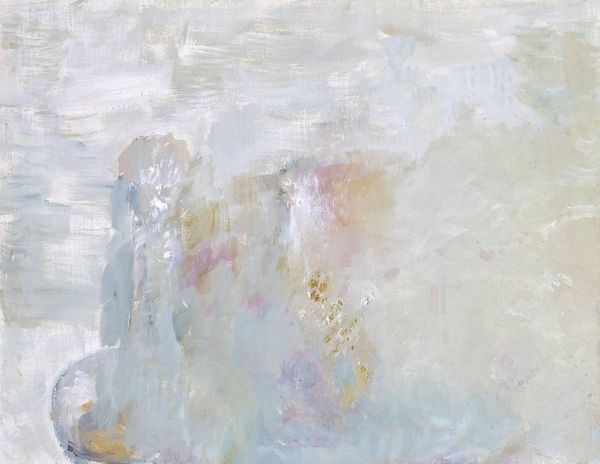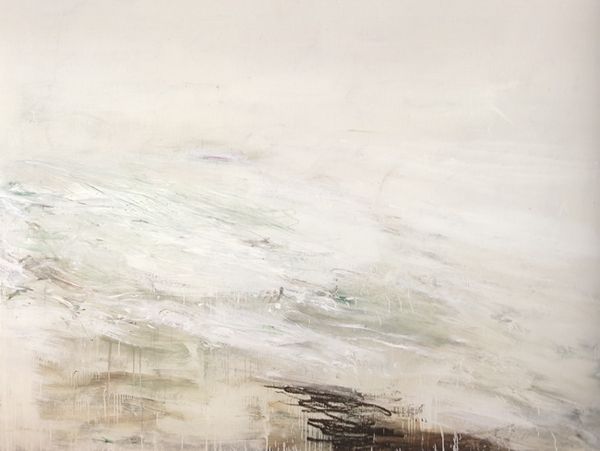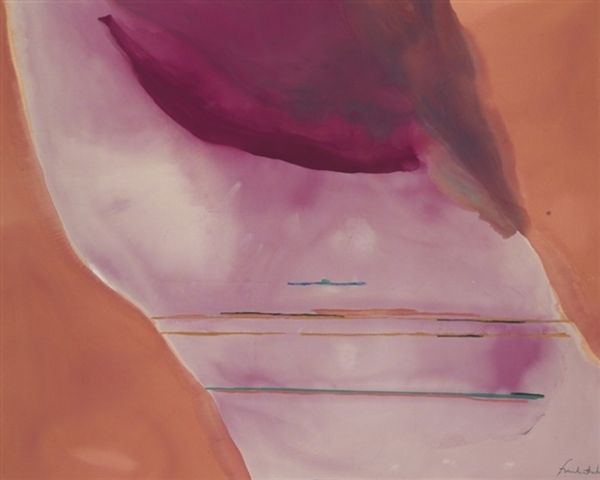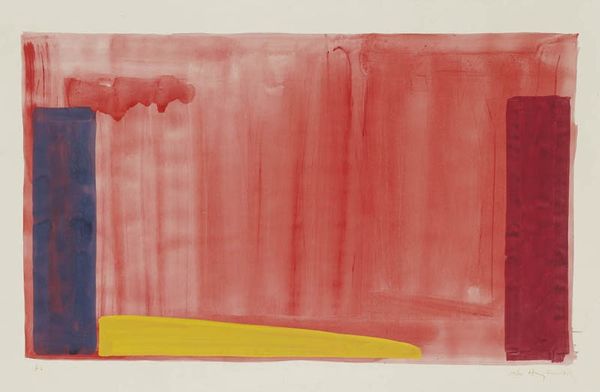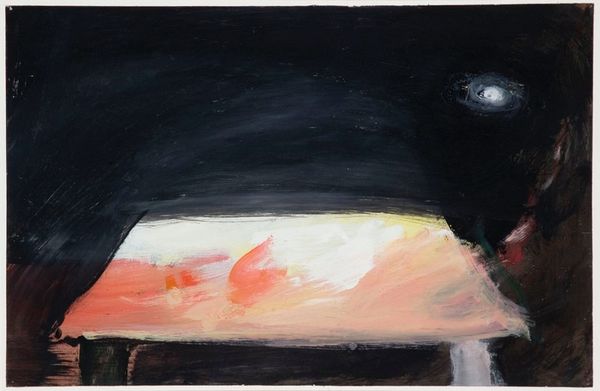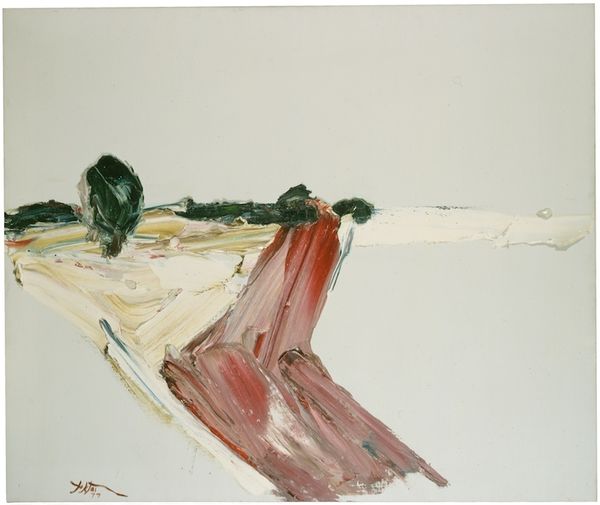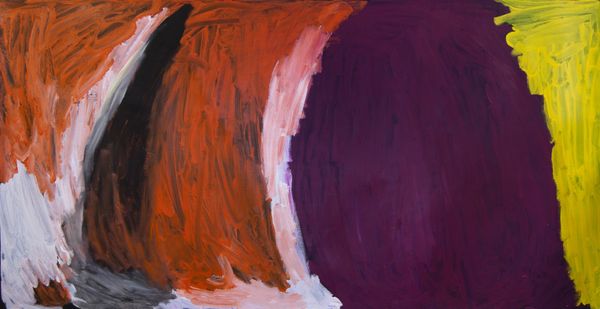
painting, acrylic-paint
#
painting
#
acrylic-paint
#
oil painting
#
acrylic on canvas
#
abstraction
#
modernism
Copyright: Eugene Brands,Fair Use
Editor: Here we have Eugene Brands' "Nature morte surnaturel," painted in 1997 using acrylic. The brushstrokes are so loose; it feels more like a fleeting impression than a traditional still life. What do you see in this piece, beyond the obvious? Curator: Beyond the table and suggestion of fruit, I see a dialogue with memory. The abstracted forms remind us that objects are not just things, but also carriers of emotion, of past experiences. What colours persist, what lines break away? Editor: So the broken lines, the blurring... they are less about inaccuracy, and more about evoking a feeling of transience? Curator: Exactly. Think about how often memories themselves fade, shift. Brands uses a still life, traditionally about permanence, to evoke impermanence. Notice how the solidity of the table is undermined by the loose brushwork. It's almost dissolving. Editor: It does feel like a memory fading as we observe it! I’m used to interpreting clarity as strength. It’s fascinating to think that obscurity can represent the strength of remembrance itself. Curator: Indeed. In art, as in memory, what persists and what fades often reveals deeper psychological truths about how we engage with the world. Editor: That makes me appreciate the “surnaturel” aspect of the title, its connection to surrealism, all the more. Thank you! Curator: My pleasure. It’s a valuable reminder that symbolism can reside in the subtlest of visual cues.
Comments
No comments
Be the first to comment and join the conversation on the ultimate creative platform.


